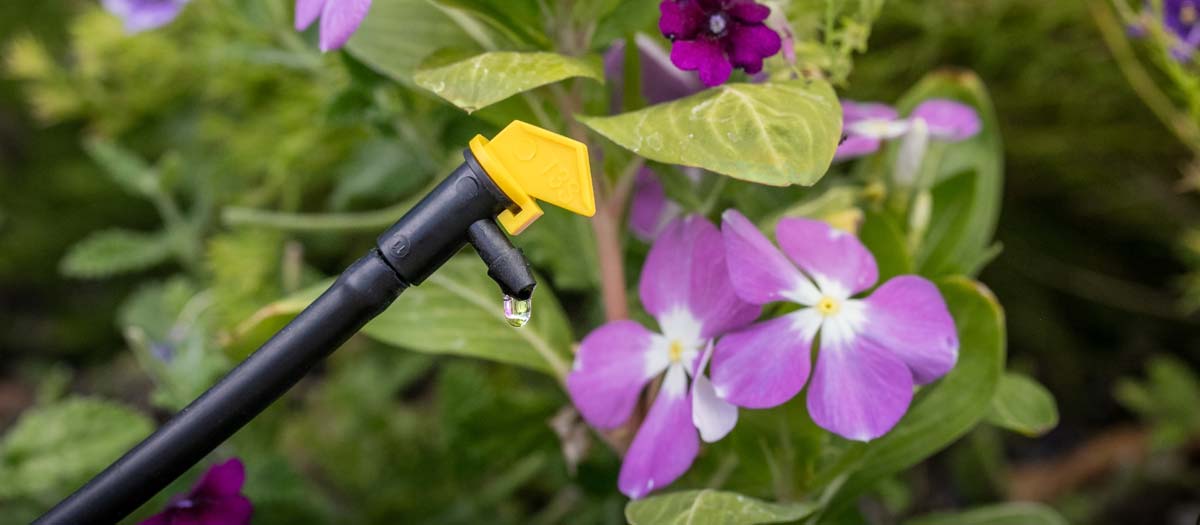Drip irrigation is truly beneficial to plants in desert environments. Drip irrigation systems should run longer than sprinkler systems because they deliver water more slowly and efficiently.
However, be careful not to overwater your plants.
How often to water
Seasonal watering restrictions apply to customers with drip irrigation systems. While drip irrigation may occur any day of the week, the number of days is limited by season.
Plants need far less water than grass. We recommend you run drip irrigation systems:
- Twice a week in spring and fall
- Every other day in the summer
- Once a week or every other week in winter
How long to water
Determine the amount of time to water based on the rate of flow of your drip emitters.
| Emitter type | Length of each watering |
|---|---|
| High-flow emitter (Up to 20 gph) | 12 minutes |
| Low-flow emitter (Up to 4 gph) | 30 minutes |
| Low-flow emitter (Up to 2 gph) | 60 minutes |
| Low-flow emitter (Up to 1 gph) | 90 minutes |
Rate of flow
To find out how fast your drip emitter produces water, measure how many seconds it takes to fill a tablespoon:
- 14 seconds equals 1 gallon per hour (gph)
- 7 seconds equals 2 gph
- 4 seconds equals 4 gph
High-flow or low-flow? Don't know?
Low-flow: Beads on tip or drips slowly
High-flow: Streams like a water fountain
gph: Gallons per hour, often marked on the emitter head. There are many emitter types.
If plants look stressed
Adjust run times if your plants appear stressed.
First, check the soil moisture. Wet soil means your plants may be over-watered. Water less often or for less time.
If the soil is dry, check that all emitters are working properly. If they are, increase the watering time or add emitters only near the stressed plants.
Sprinkler and drip irrigation—what's the difference?
Whether you have sprinklers or drip irrigation—or both—it’s important to know the difference between them. Get the break down on how each system works and how long you should water your landscape.
Designing and planning your drip system
A new plant may require only one emitter initially. As the plant grows, so does the demand for water. When a drip system is installed, it should be designed so it has the flexibility to change the amount of emitters and the location of the emitters in the landscape. Each emitter should give you at least a 30-minute run time without runoff. Trees may also need more drip irrigation adjustments as they mature.
Maintenance
Check your drip line periodically for breaks and check emitters for clogs or heads that have broken off. Ensure that each emitter is releasing the proper amount of water.
- Hold your finger over the emitter's outlet for a few seconds, so that the water can flush back and clean the emitter to help unclog it.
- Change the drip irrigation lines and filters at least twice a year, or whenever you change your irrigation schedule.
- Find the "end cap" on your drip line. This should be at the furthest point from your valve box. Open the cap and briefly run the system to flush out any debris that could be clogging your line. Turn off the water before trying to recap your line.
